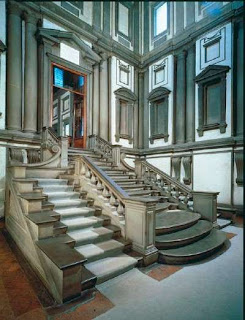To clarify my statements, the first example would be Modernism and is enemy, Post Modernism. While Mies was experiencing the pure geometric forms made out out of the factory made materials- glass, steel, concrete and stucco, the UN studio broke the rule (international style) by creating Villa NM.

http://www.e-architect.co.uk/chicago/farnsworth_house.htm

http://archidose.blogspot.com/2008/02/un-studios-villa-nm-destroyed-in-fire.html
The similar way of rebelling is approached by Baroque architects- deriving from the disobedient thought of the new style, in this case, the Renaissance. On clear example is Bramente's Tempietto and Michelangelo's buildings. The perfect symmetry and the ideal depiction of Vitruvien ideology is baroque. There are uses of animated figures, bending and distorting of forms creating a play in perspective. Life is added in Michelangelo's architecture. Walls and facades became places for expression like the Church of St. Vincent for example.


